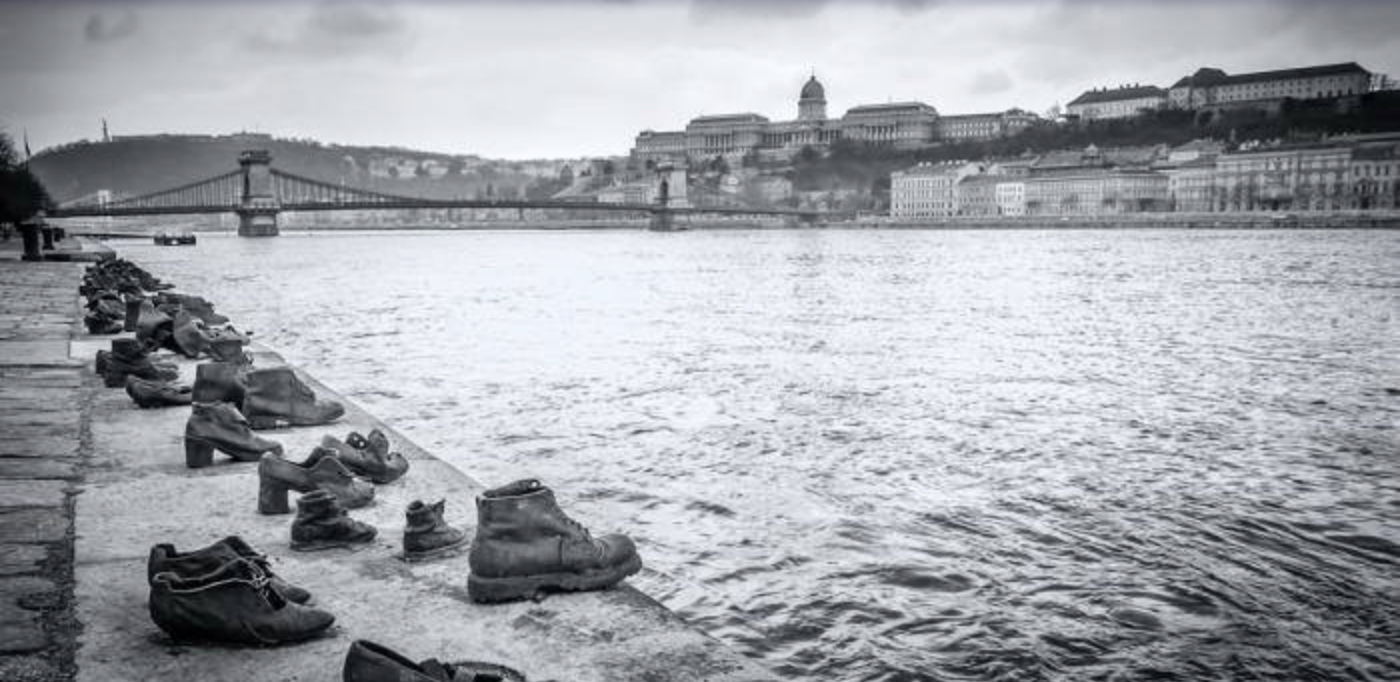
The Shoes on the Danube Bank: A Poignant Reminder of Jewish Tragedy
Nestled along the picturesque banks of the Danube in Budapest, a striking and somber memorial captures the eyes and hearts of passersby. The Shoes on the Danube Bank is not only a profound piece of public art but a poignant reminder of one of the darkest chapters in Jewish history. This article delves into the historical context, artistic significance, and enduring impact of this memorial.
Historical Background
The genesis of the Shoes on the Danube Bank can be traced back to the horrific events of World War II, specifically to the mass executions of Hungarian Jews in 1944-45. Directed by Can Togay and crafted by sculptor Gyula Pauer, this memorial marks the spot where countless innocent lives were brutally snatched away.
The Artistic Vision of Can Togay and Gyula Pauer
Can Togay, a noted director and writer, together with Gyula Pauer, a Kossuth Prize-winning sculptor, conceptualized a memorial that was both stark and eloquent. Their collaboration brought to life sixty pairs of period-appropriate shoes cast in iron, symbolizing the belongings left behind by the victims.
The Significance of the Location
Geographic and Historical Importance
The choice of location along the Danube is laden with historical weight. Nearly every point along the northern bank near Margaret Island bears silent witness to these tragic events. This placement allows the memorial to serve as a constant reminder to the city’s residents and its myriad visitors of the atrocities committed on its very banks.
Symbolic Representation of Loss and Memory
The Shoes on the Danube Bank are positioned as if just stepped out of, underscoring the sudden and violent nature of the victims’ deaths. Each pair tells a story of life interrupted, a poignant representation of loss and the void left behind.
A Detailed Look at the Memorial
Description of the Sculptures
Each shoe in the collection is modeled after 1940s footwear, ranging from robust work boots to delicate children’s shoes. This detail not only emphasizes the diversity of the victims but also personalizes the tragedy, making the historical horror palpable and immediate.
The Process of Creating the Shoes
The creation of the shoes involved meticulous research and careful crafting to ensure historical accuracy and emotional impact. The cast-iron shoes were designed to resist the elements, symbolizing the enduring memory of the victims against the passage of time.
The Historical Context of the Jewish Tragedy in Hungary
Hungary during World War II
During the war, Hungary was an ally of Nazi Germany, and Hungarian Jews were subjected to increasingly severe discriminatory laws and measures, culminating in the mass deportations and murders of the final years of the war.
The Impact on the Hungarian Jewish Community
The Jewish community in Hungary, once vibrant and integral to the national fabric, was decimated. The Shoes on the Danube Bank stands as a stark reminder of the community’s destruction and the void it left in Hungarian society.
Personal Stories Connected to the Memorial
Testimonies from Survivors
Survivors and descendants of those who perished often visit the memorial, sometimes leaving candles or flowers. These personal acts of remembrance add layers of meaning to the site, linking past atrocities with present memories.
The Role of Personal Memorials in History
Personal memorials like the Shoes on the Danube Bank play a crucial role in history. They ensure that the stories of individual victims are remembered and honored, thus personalizing the abstract statistics of war atrocities.
Educational Impact of the Memorial
The Memorial as an Educational Tool
The memorial serves as a vital educational tool, shedding light on the Holocaust’s impact in Hungary. It provides a tangible connection to history, particularly for younger generations who may not fully grasp the magnitude of the Holocaust’s horrors.
Tours and Visitor Experiences
Guided tours at the memorial explain the historical significance and encourage reflection and learning. These tours are instrumental in educating visitors about Jewish history and the importance of remembering the Holocaust.
Cultural and Global Relevance
Comparisons with Other Holocaust Memorials
The Shoes on the Danube Bank is often compared with other Holocaust memorials around the world. Each has its unique approach to memorializing victims, yet all share the common goal of remembrance and education.
The Memorial’s Influence on Modern Art and History
The artistic and historical significance of the Shoes on the Danube has transcended local boundaries, influencing modern art and historical discussions worldwide. It serves as a model for how art can preserve memory and provoke thoughtful discussion.
Preserving the Memory: Conservation Efforts
Current Conservation Practices
Efforts to maintain the memorial involve regular maintenance and protective measures to counteract the effects of weather and vandalism, ensuring that it continues to serve its purpose for years to come.
Future Challenges
As time passes, the challenges of preserving such memorials increase. However, the commitment to maintaining these sites is crucial for ensuring that the lessons of the past remain vivid and relevant.
The Shoes on the Danube Bank is more than just a memorial; it is a profound lesson in humanity, a call to remember and a warning never to repeat the mistakes of the past. It stands as a testament to the lives lost and as a beacon of hope that by remembering, we might prevent such tragedies in the future.



